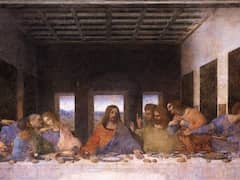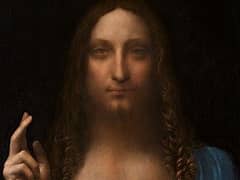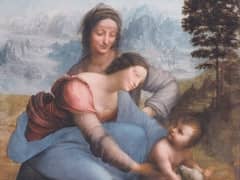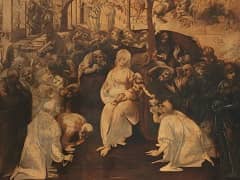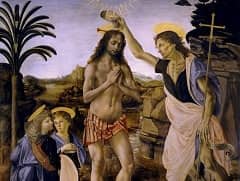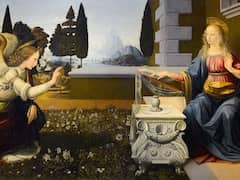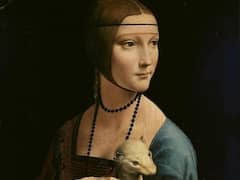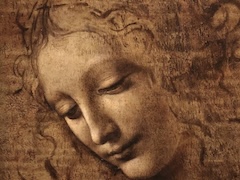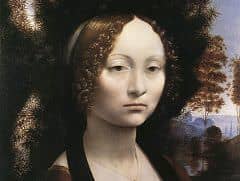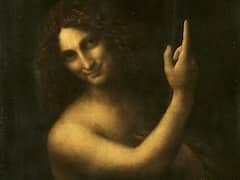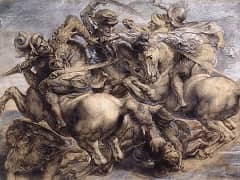The Virgin and Child with Saint Anne by Leonardo da Vinci

The Virgin and Child with St Anne was painted by Leonardo da Vinci in 1510. It is Oil on wood and measures 168 x 130 cm (5 1/2 x 4 1/2 ft.). The original one is now located at Louvre, Paris.
This painting depicted St. Anne, her daughter the Virgin Mary, and the infant Jesus. Christ is shown grappling with a sacrificial lamb symbolizing his Passion whilst the Virgin tries to restrain him. The painting was commissioned as the high altarpiece for the Church of Santissima Annunziata in Florence and its theme had long preoccupied Leonardo.
Leonardo first explored the topic of the Virgin and Child with Saint Anne around about 1498. His original sketch is now lost to us, but in the one illustrated below, commonly termed the Burlington House Cartoon, the infant Christ is shown blessing a young St. John during a meeting in the desert. This is only one of many sketches on the theme that was never translated into a painting; Leonardo was to entirely abandon these earlier ideas. Cartoons are preparatory large-scale drawings intended to be transferred to a wall or canvas during the final painting; this one was named after the British collection which once owned it. Many scholars prefer the Burlington House Cartoon to Leonardo's completed oil painting, pointing out how the face of the Madonna is much more natural and less wooden looking.
Here, he has arranged the figures as a pyramid set in a landscape. While the theme of the Virgin Mary, her mother (Anne), and Jesus was common, it is unusual for Mary to be portrayed in her mother's lap. The background landscape, whose crags are seemingly replicated in Anne's veil, virtually melts in its sfumato haze. The baby lamb is both a symbol of innocence and of Jesus' sacrifice for humanity, memorialized in John the Baptist's reference to Jesus as the "Lamb of God".


